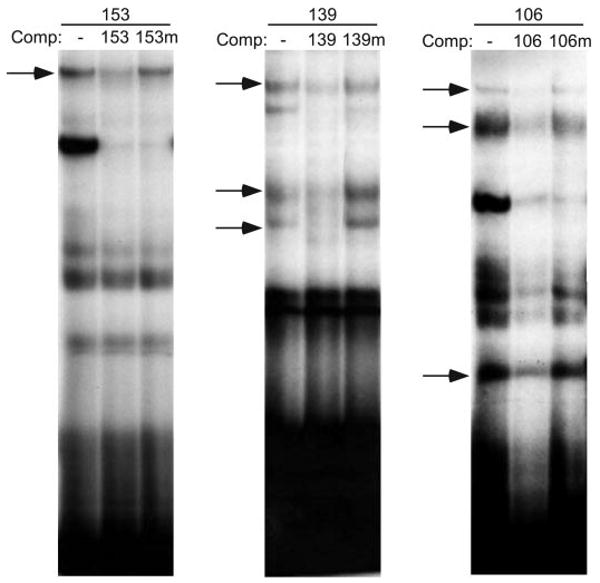Fig. 5.

Specific protein complexes from LβT2 nuclear extracts bind the −153, −139, and −106 activin-responsive regions. Nuclear extracts prepared from LβT2 cells were incubated with the 153, 139, or 106 probes and tested for specific complex formation in EMSA. The 500× cold competitors (Comp) were added to test the specificity of complex formation as indicated: 153 probe with no competition (–), self-competition (153), or mutant competition (153m); 139 probe with no competition (–), self-competition (139), or mutant competition (139m); and 106 probe with no competition (–), self-competition (106), or mutant competition (106m). Complexes competed by self-competition, but not by mutant, are indicated with arrows.
